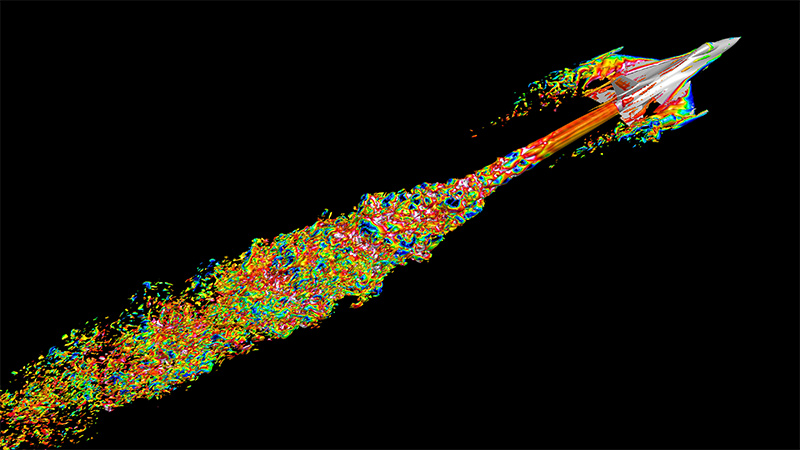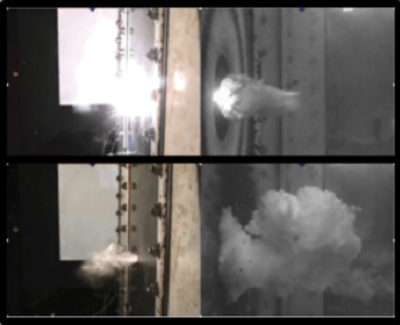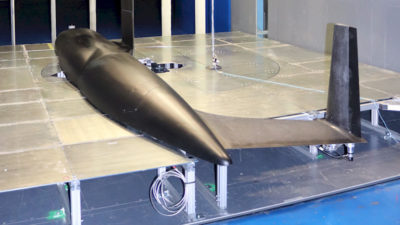Tech demonstration for future rotocraft
By Nathan Hariharan|December 2017
The Applied Aerodynamics Technical Committee emphasizes the development, application and evaluation of concepts and methods using theories, wind tunnel experiments and flight tests.
The military and its aerospace industry partners made great strides in 2017 on advancing vertical flight.
The U.S. Army Aviation Development Directorate and industry partners flight tested two Joint Multi-Role Technology Demonstrator rotorcraft — the Bell V280 Valor air vehicle concept demonstrator and the Sikorsky-Boeing SB>1 Defiant — to demonstrate advanced technologies and prepare the Army for the Future Vertical Lift acquisition program. Army researchers worked with Bell, Sikorsky-Boeing, California-based Karem and South Carolina-based AVX to perform high-fidelity, high-performance computing physics-based modeling with the High Performance Computing Modernization’s CREATE-AV Helios rotorcraft software to predict performance and better understand interactional aerodynamics. CREATE is short for the Computational Research and Engineering Acquisition Tools and Environments program. Results from the physics-based models are being compared with test data from both ground and flight tests as it becomes available to better understand the aircraft.
NASA’s Advanced Air Transport Technology Project in January tested the Fundamental Aerodynamic Subsonic Transonic-Modular Active Flow Control model in the National Transonic Facility in Virginia. That model is based on a supercritical wing that was designed to become an NTF standard for evaluating performance characteristics of integrated active flow control and propulsion systems. Arrays of sweeping jet actuators, fabricated using rapid prototyping, were located immediately upstream of the flap and used to control flow separation with the flap deflected and for cruise drag reduction with the undeflected flap. For the 30-degree flap subsonic, high-lift configuration, the sweeping jets achieved comparable lift performance in the separation control regime, while reducing the mass flow by 54 percent as compared with steady blowing. For the transonic cruise configuration, the sweeping jets reduced the drag by 3.3 percent at an off design condition.
The U.S. Army Aviation Development Directorate’s Aeroflightdynamics Directorate has collaborated with NASA’s Revolutionary Vertical Lift project office and Germany space organization DLR to develop a way to measure time-accurate boundary layer transition locations on a helicopter rotor blade in hover and forward flight. Forward flight testing began in June. Accurate transition measurements for a rotating blade have remained a challenge. Using recent advancements in long-wave infrared camera technology coupled with heatable coating on blade surface, boundary layer transition locations on a Mach-scale rotor were efficiently and accurately measured.
Transition location and hover performance measurement results were presented in January at the fourth AIAA Rotorcraft Hover Simulation session series at the AIAA SciTech Forum in Texas. The hover measurements and simulations discovered the amount of laminar flow present on model scale rotor blades in hover is significant and the amount of laminar flow has a considerable effect on hover performance.
The CREATE program continued developing and deploying scalable, multidisciplinary, physics-based computational engineering products for the design and analysis of ships, air vehicles and RF antennas. These products first became available in September; more were released through November. The Department of Defense released three products in 2017: the fixed-wing analysis tool Kestrel 8.0, the rotorcraft analysis tool Helios 8.0 and CREATE-AV Genesis.
Kestrel 8.0 introduces multispecies and supporting capabilities to bring together technologies for tackling hypersonic flow regime problems. Helios 8.0 introduces enhancements to automation and accuracy, including in turbulence and transition models. CREATE-AV Genesis is a combination of basic fluid dynamics and aircraft design software targeted toward teaching the next-generation of engineers at institutes of higher learning. It is being piloted at the school of Aerospace Engineering at Georgia Tech.



































